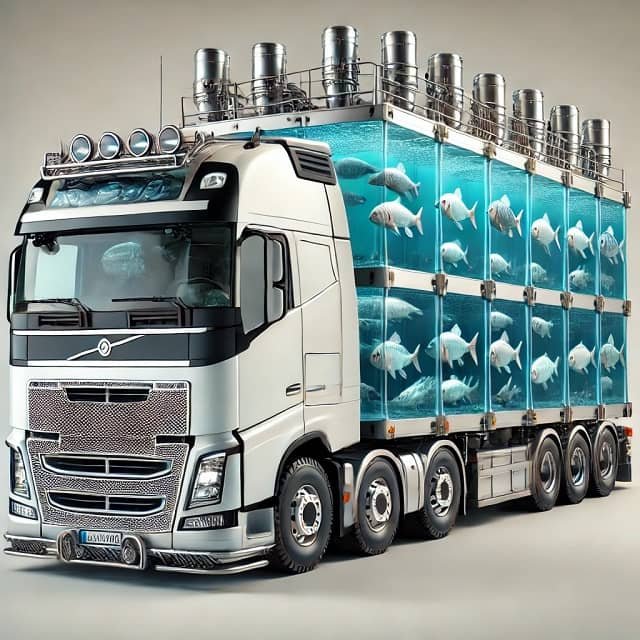Aquaponics, a sustainable and eco-friendly system, is gaining recognition for its potential to revolutionize food production by efficiently utilizing fish culture nutrients to grow vegetables. A critical factor affecting the efficiency of aquaponic systems is the hydraulic loading rate (HLR), which refers to the volume of water flowing through the system per day. For aquaculturists, determining the optimal hydraulic loading rate is vital for improving plant and fish growth and maintaining dissolved oxygen levels.
A study published by scientists from Benha University, the College of Engineering and Technology, Arab Academy for Science and Technology and Maritime Transport (AASTMT), and the Institute of Agricultural Engineering Research, Agriculture Research Center, investigates the effects of different HLRs on fish and plant performance in an aquaponics system.
The Importance of Hydraulic Loading Rate
In aquaponic systems, the hydraulic loading rate is a critical factor that must be optimized to achieve the best production results as it significantly impacts system performance. Various studies have reported that a low HLR leads to oxygen deficiency and denitrification, while a high HLR reduces the contact time between roots and water. Moreover, different nutrient reduction rates result in excessive nutrient concentrations in plants and an accumulation of excess nutrients in fish, causing toxic effects. Therefore, it is essential to determine the optimal hydraulic loading rate for each system.
The Experiment
In this study, four different HLRs (1.2, 1.8, 2.4, and 3.0 m³/day) were implemented in an aquaponics system. The system included tilapia fish with a population density of 5 kg/m³ and a lettuce plant population of 25 plants/m².
The aquaponics system used in the research comprised four circular fiberglass fish culture tanks, each with dimensions of 1.0 m in diameter and 1.0 m in height, with a water volume of 0.60 m³ in each tank. Additionally, four circular fiberglass tanks (Bio-sumidero) with dimensions of 0.75 m in height and 0.70 m in diameter were used for solid waste removal.
Results
The study provided valuable insights into the relationship between HLR and the performance of both fish and plants in the aquaponics system:
- Nutrient Removal Efficiency: The highest removal of plant nutrients was observed at an HLR of 2.4 m³/day. Within the range tested, an HLR of 2.4 m³/day is optimal for maximizing nutrient absorption by plants.
- Water Quality: The highest values for various water quality parameters were observed at an HLR of 2.4 m³/day, indicating that maintaining this specific HLR can create a favorable environment for both fish and plant growth.
- Plant Growth: Root length increased with higher HLR, and the weights of fresh and dry shoots and roots were significantly higher at an HLR of 2.4 m³/day compared to other rates. This suggests that this HLR contributes to improved plant growth and productivity.
- Fish Growth: Fish-related parameters showed better growth performance at an HLR of 3.0 m³/day. This was reflected in higher values for weight gain, feed growth rate, specific growth rate, and feed conversion ratio, crucial indicators of fish health and productivity.
Significance
The findings from this study have significant implications for optimizing aquaponics systems. Adjusting the HLR to 2.4 m³/day can maximize nutrient uptake by plants, leading to healthier and more productive vegetation. Simultaneously, maintaining an HLR of 3.0 m³/day can enhance fish growth and performance. However, the choice of HLR should align with the specific goals of the aquaponics system, whether it prioritizes plant or fish growth.
Conclusion
The synergy between fish and plants in aquaponics systems holds promise for sustainable and eco-friendly food production. The selection of the hydraulic loading rate is pivotal in determining the overall system performance.
Stay Always Informed
Join our communities to instantly receive the most important news, reports, and analysis from the aquaculture industry.
According to the results of this study, using an HLR of 2.4 m³/day yielded the best results in terms of both fish and plant growth, with higher nutrient removal rates and specific growth rate (SGR) compared to other HLR levels tested in this study. This research not only advances our understanding of aquaponics but also contributes to ongoing efforts to develop efficient and sustainable food production methods in a world with increasingly limited resources.
Contact
El-Sayed Khater
Agricultural and Biosystems Engineering Department
Faculty of Agriculture, Benha University
P.O. Box 13736, Moshtohor, Toukh, Kalubia, Egypt
Email: alsayed.khater@fagr.bu.edu.eg
Reference (open access)
Khater, ES., Bahnasawy, A., Ali, S. et al. Study on the plant and fish production in the aquaponic system as affected by different hydraulic loading rates. Sci Rep 13, 17505 (2023). https://doi.org/10.1038/s41598-023-44707-1
Editor at the digital magazine AquaHoy. He holds a degree in Aquaculture Biology from the National University of Santa (UNS) and a Master’s degree in Science and Innovation Management from the Polytechnic University of Valencia, with postgraduate diplomas in Business Innovation and Innovation Management. He possesses extensive experience in the aquaculture and fisheries sector, having led the Fisheries Innovation Unit of the National Program for Innovation in Fisheries and Aquaculture (PNIPA). He has served as a senior consultant in technology watch, an innovation project formulator and advisor, and a lecturer at UNS. He is a member of the Peruvian College of Biologists and was recognized by the World Aquaculture Society (WAS) in 2016 for his contribution to aquaculture.




